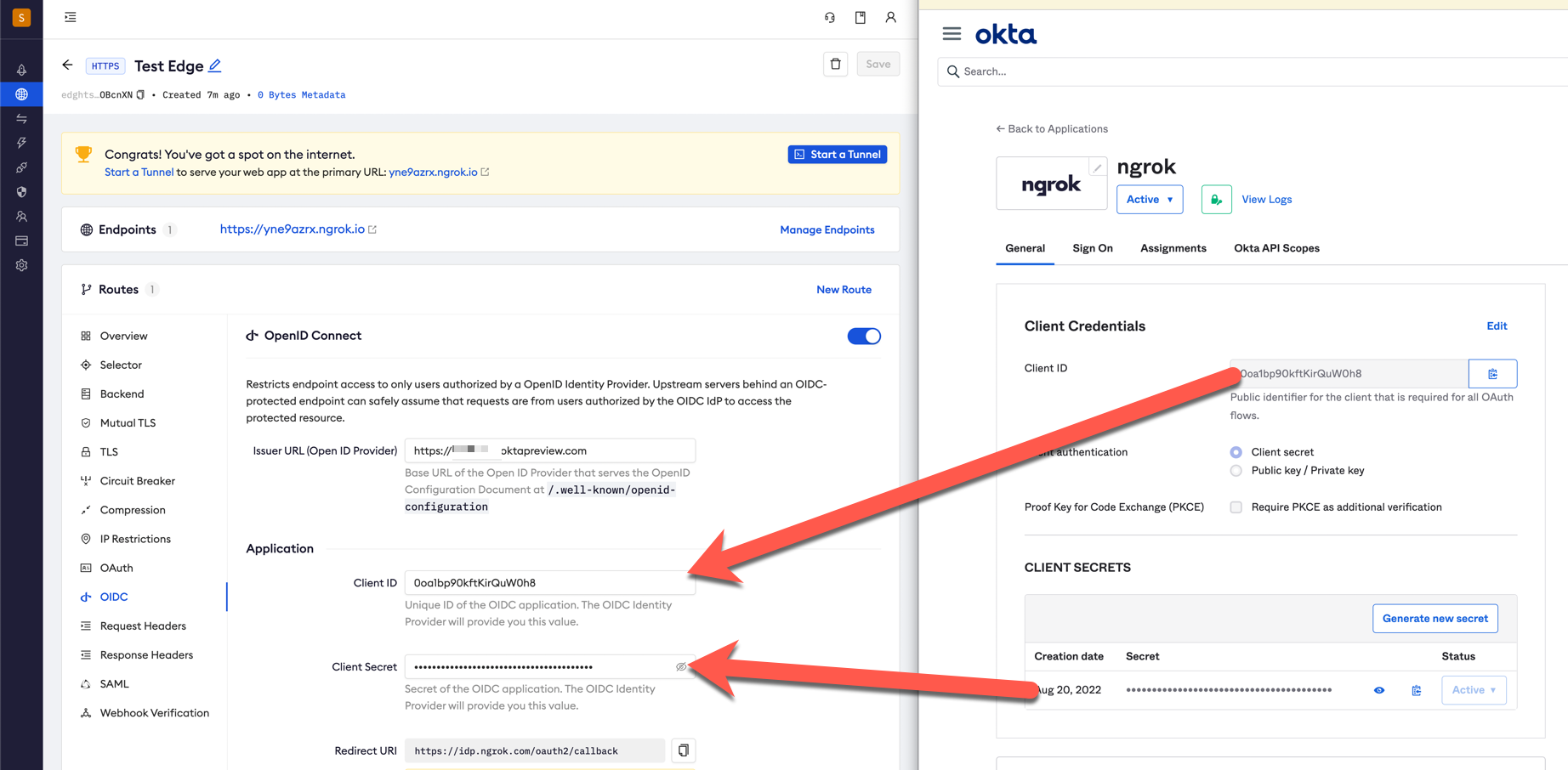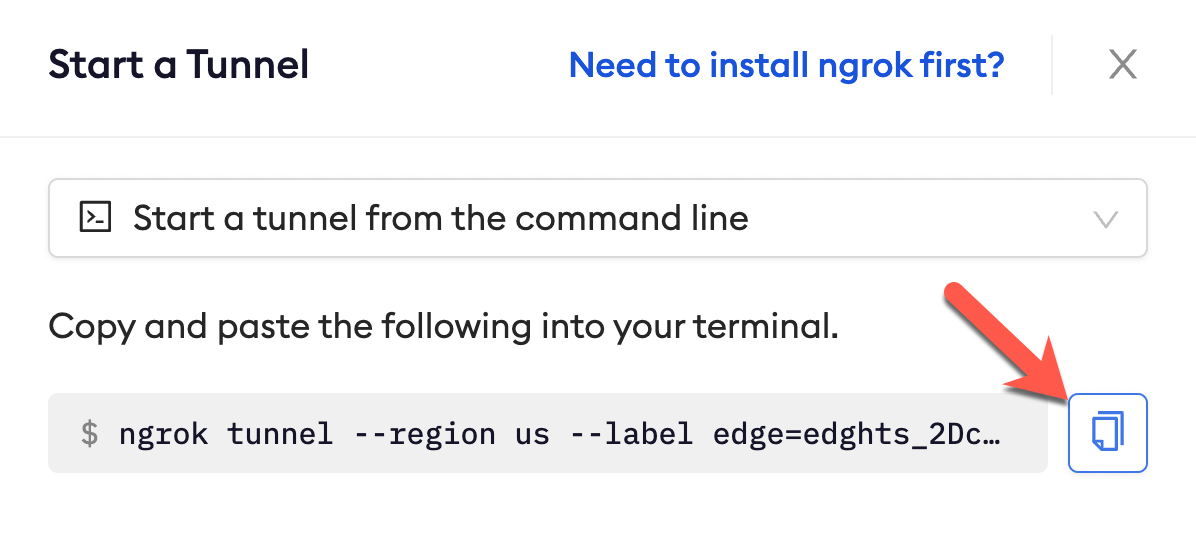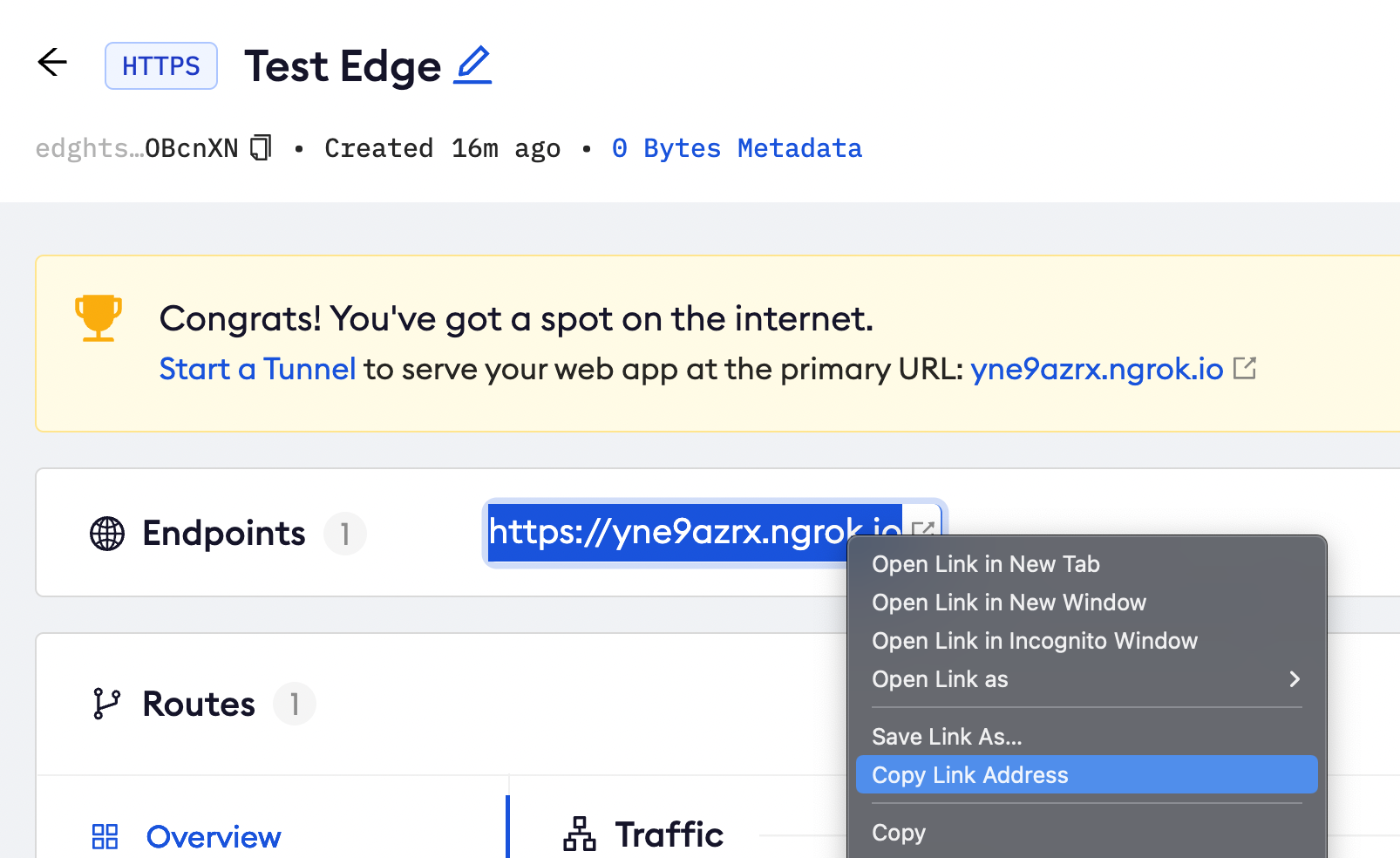Okta SSO (OpenID Connect)
To secure access to ngrok with Okta Single Sign-On using OpenID Connect:
This article details how to configure Okta as the primary Identity Provider for ngrok tunnels. By integrating Okta SSO with ngrok, you can:
- Restrict access to ngrok tunnels only to users authenticated via Okta
- Use Okta security policies, MFA authenticators — including Okta Verify, FastPass, and FIDO2 — and ThreatInsights to control access to ngrok tunnels.
- Use Okta's Dashboard to facilitate access to ngrok apps.
Supported Features
The ngrok integration with Okta supports:
- SP-Initiated SSO: In this mode, users access ngrok edges and tunnels and are redirected to Okta for authentication.
Requirements
To configure ngrok tunnels with Okta, you must have:
- an Okta account with administrative rights to create apps
- an ngrok Enterprise Account with an authtoken or admin access to configure edges with OpenID Connect.
Configuration Steps
To integrate ngrok with Okta SSO, you will need to:
- Configure Okta with the ngrok app
- Configure ngrok with the SSO settings provided by Okta
Step 1: Configure Okta
Add the ngrok App in Okta
- Access your Okta Dashboard as an administrator and then click Admin.
- Click Application > Applications .
- Click Browse App Catalog,
- Search for ngrok, and then click Add.
- Enter the Application label — this is the app name that will be displayed in the okta dashboard for end users — and click Next.
- Select OpenID Connect, and then enter the following:
- Sign-in redirect URI: https://idp.ngrok.com/oauth2/callback
- Login initiated by: Login initiated by app
- Click Done.
- Under the Sign On tab of the ngrok application, copy the Client ID and Client Secret. These values will be used at ngrok to complete the configuration.
- In the ngrok configuration under Scopes add the following OAuth Scopes:
openid,profile,email
Grant access to Okta people and groups
Okta allows administrators to restrict access to SSO apps — such as ngrok — via assignments. By default, apps created in Okta have no assignments — in other words, nobody can use Okta SSO to access ngrok until you assign them to the app. To assign Okta users and groups to the ngrok app:
- Click Application > Applications .
- Search for and click the ngrok app.
- Click Assignments.
- Use the Assign button to associate groups and users with the ngrok app. To test the SSO with ngrok, make sure you're assigned to the app.
Step 2: Configure ngrok
ngrok can leverage Okta SSO in two ways:
- From the ngrok CLI (using the
--oidcparameter) - From the ngrok dashboard
Option 1: ngrok CLI
Note: For this tutorial, we assume you have an app running locally (i.e., on localhost:3000) with the ngrok client installed.
-
Launch a terminal
-
Enter the following command to launch an ngrok tunnel with Okta SSO. Replace
<okta_url>with your okta org address (i.e., https://acme.okta.com) and the<okta_client_id>and<okta_client_secret>with the respective values copied from the ngrok app registered at Okta. Optionally, add the--url <domain>argument to get your own custom URL, replacing<domain>with your URL of preference:ngrok http 3000 --oidc=<okta_url> \
--oidc-client-id=<okta_client_id> \
--oidc-client-secret=<okta_client_secret> \
--url=<domain> -
Copy the url available next to Forwarding (for example,
https://okta-sso-test.ngrok.dev). -
Skip to Step 3
Option 2: ngrok Edge
To configure an edge with Okta:
-
Go to dashboard.ngrok.com.
-
Click Universal Gateway > Edges
-
If you don't have an edge already set to add Okta SSO, create a test edge:
- Click New Edge
- Click HTTPS Edge
- Click the pencil icon next to "no description". Enter Edge with Okta SSO as the edge name and click Save.
-
On the edge settings, click OIDC.
-
Click Begin setup and enter the following:

- Issuer URL: Your okta tenant url (i.e. https://acme.oktapreview.com).
- Client ID: The client id copied from Okta
- Client Secret: The client secret copied from Okta
-
Click Save.
-
Launch a tunnel connected to your Okta edge:
For this step, we assume you have an app running locally (i.e. on localhost:3000) with the ngrok client installed.
-
Click Start a tunnel.
-
Click the copy icon next to the tunnel command.

-
Launch a tunnel:
- Launch a terminal
- Paste the command. Replace http://localhost:80 with your local web app addess (i.e., http://localhost:3000)
- hit Enter. an ngrok tunnel associated to your edge configuration will launch.
-
To confirm that the tunnel is connected to your edge:
- Return to the ngrok dashboard
- Close the Start a tunnel and the Tunnel group tabs
- Refresh the test edge page. Under traffic, You will see the message You have 1 tunnel online. Start additional tunnels to begin load balancing

-
In the test edge, copy the endpoint URL. (you will use this url to test the Okta Authentication)

Step 3: Test the integration
- In your browser, launch an incognito window.
- Access your ngrok tunnel (i.e., https://okta-sso-test.ngrok.io or using a copied URL).
- You should be prompted to log in with your Okta credentials.
- After logging in, you should be able to see your web app.